5 Traffic Exchange Programs that Actually Work
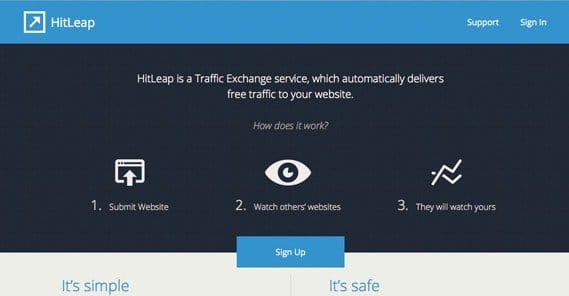
Traffic exchanges are an interesting concept, but they can lead you to disaster if you use them incorrectly. The focus of this article will be on helping you use an exchange appropriately, in a way that won’t destroy your search ranking or hinder your normal traffic.
How Traffic Exchanges Work
If you’re already experienced with traffic exchanges and you’re just looking for a list of programs that work, go ahead and skip down to the list. If you only kind of know what one is, or you’re completely ignorant about the concept, read on.
A traffic exchange begins with a central hub site, running software of a specialized kind. Website owners sign up to be a part of this exchange, and their website is added to a list. Another publisher signs up and puts their site into the list as well. This repeats to grow a list of websites as long as the exchange wants it to be. Some of the biggest exchanges involve millions of sites; some of the smallest might only have a few thousand.
Where does traffic come from? If you want visitors to your site, you need to earn them. You earn them by browsing the list on the exchange. The list is made up of other publishers who want traffic, and who are doing the same browsing.
This way, your traffic is coming from other publishers, often the publishers of the sites you’re viewing. Your views on the sites you find through the list are views those publishers are earning.
The central hub is what regulates all of this. It keeps track of how many views a publisher has earned, and puts their site into the rotation until it has received that much traffic. If the publisher stops earning views, they stop receiving traffic.
One problem that comes up is the balance between earned views and paid out views. At a 1:1 ratio, ideally, everything would work out perfectly. However, some publishers will earn credits for traffic they don’t claim. Others will spend money for credits, rather than earning credits through viewing.
The usual way a traffic exchange regulates this is by “taxing” views. You’ll see this as the listed “ratio” on a traffic exchange site. A ratio of .5, for example, means that you need to browse two websites in order to earn one view of your own.
Of course, traffic exchanges have evolved from this relatively simple concept. They add additional features, like buying large amounts of traffic directly, or entering contests with credits for jackpots of more credits or payouts. Many traffic exchanges also incentivize more incoming traffic than is earned or bought, by offering payouts to regular users who want to earn some money but who don’t have sites or care about claiming traffic. They earn credits, and exchange those credits for cash rather than for traffic.
The Difference Between Autosurf and Manual Exchanges
If you’re not new to the Internet, one good question is going to come to mind. What would happen if you created a bot, a piece of software, that browsed for you? You would earn credits while you did other things, in the background, and you could claim those credits for traffic. You are essentially getting something for nothing.
This is the concept of the autosurf, and some traffic exchanges have embraced it. Others prefer to restrict bot access, and there’s a good reason for that. That reason is traffic quality.
If you use a bot to browse, you’re putting nothing into the system. You’re giving “views” but those views are not real. It’s no different, and no more valuable to your site, than some Lycos search engine web crawler. You don’t want or like bot traffic coming to your site, because it doesn’t convert, it doesn’t subscribe, and it doesn’t click ads.
Now reverse the roles. If you’re putting your own time and energy into browsing, you want the views you earn to be good. How do you feel if you put effort into earning credits, and the traffic you get is coming from bots someone else is using to earn their own credits?
A manual traffic exchange bans the use of bots for surfing. This is meant to ensure that the traffic you get from the network is as high quality as possible. Autosurf exchanges, however, not only sanction the use of bots; they often provide the bots themselves, in the form of specialized browsers or browser extensions. It works almost like StumbleUpon in practice.
You will find in general that a manual exchange is typically better for earning and redeeming legitimate traffic. Autosurf networks are more for people who want to make a few dollars a day by running a piece of software in the background of their computers. You’re free to try both out and see which provides better traffic, however.
How Using a Traffic Exchange Can Hurt Your Site
One common complaint with traffic exchanges in general is that the traffic is never very targeted. Even if the exchange segments sites into categories and keeps users going to categories they’re interested in, they’re still publishers, not users. They’re not looking for new resources or new products to buy. They’re looking to earn traffic with as little effort as possible. Sure, you might occasionally attract someone, but chances are your conversion rate on exchange traffic is going to be very, very low.
Autosurfs, of course, are virtually worthless for generating traffic. In rare cases, you can set up ads that pay per view, and that have low enough filtering to accept the bot traffic as legitimate views and pay you for them. You’ll have to use the autosurf yourself to earn traffic, though, rather than pay for it. The money you’d earn would be less than the money you pay for credits in almost every case.
That’s just about negative effects for the exchange. How, though, might using an exchange detriment your site as a whole?
For one thing, invalid traffic from an exchange can lead to having your ad accounts terminated. This is especially true for Google’s AdSense, which specifically calls out traffic exchanges as a risky technique. You might notices that they don’t explicitly ban their use. That’s because a high quality traffic exchange can actually be a good means of advertising. It’s only when you enter a poor exchange – and run it on the same pages that have AdSense ads – that it hurts you.
If your traffic exchange is one that encourages publishers to add links to other sites in the network, it can result in a lot of spam backlinks. This is obviously a bad thing. Google doesn’t like seeing sites with a lot of backlinks from poor quality sites. Heck, even of those sites aren’t poor quality, if they’re not relevant, that can be just as bad. Read all about the Penguin algorithm update to see what can happen and how hard it can be to recover from the penalty.
If you go overboard with traffic, and your hosting is sufficiently minimal, you might accidentally DDoS yourself. This is admittedly a rare event, and you’d have to have a combination of a lot of traffic and a pretty bad web host. Still, it’s vaguely possible, and can be damaging.
Steps to Take to Prevent Exchange Damage
There are a few things you can do to minimize any potential damage from traffic exchanges. You should always have the groundwork in place before you sign up for an exchange and spend credits to bring in traffic.
- Make sure you have quality hosting. This is important in a few ways. For one thing, some shady low tier web hosts might frown upon you enrolling their servers in a traffic exchange. Most won’t care. There’s the vague chance of the self-DDoS I mentioned, but that’s not really a concern. Really, a good web host is easy to come by these days, so you should never go without one regardless of what you’re trying to do.
- Take steps to filter bots from your analytics. This will help you know how much of the traffic you’re getting from a traffic exchange is legitimate, versus how much of it is bots. Some of it will require some manual monitoring and ongoing blocking, but you can filter common bots with a click in Google Analytics. This article is a great resource for filtering out bot traffic.
- Make sure your site is optimized to capture visitor attention as quickly as possible. Traffic exchanges often have a minimum length of time for a visit to count, so you can’t just hammer through pages as quickly as possible. It’s still measured in seconds, though, and it means you only have a few seconds to catch user attention. Make sure that your single landing page, above the fold, is enough to hook them.
- Go for the soft sell. Most of the people surfing traffic exchanges aren’t in it to shop, so you’re not going to sell anything. What you’re doing is gaining leads. You’re not going to be able to capture much more than an email based on your landing page. So, instead of trying and failing to sell a product, try to capture leads and use a longer-term email campaign to convert those users.
- Don’t run ads on pages you’re sending traffic from an exchange to. This is just simple common sense. If you’re going to send traffic exchange traffic to your site, you don’t want ads on that site. Usually, traffic exchange users don’t navigate away from their landing page, so it’s okay to advertise on pages other than your landing page. Just avoid sending questionable leads to ads.
- Make sure you sign up for a high quality exchange, not some bottom of the barrel network. That’s probably why you’ve come to read this article; the list at the bottom. Everything else, including all of this information, is just gravy for you. The higher quality – and more exclusive – the traffic exchange, the better the traffic will be.
- Take advantage of volume-increasing traffic exchange loopholes. Some traffic exchanges will allow you to earn credits by referring users, and will give you a cut of the credits those users earn. If you treat the traffic exchange as more of a MLM scheme than a 1:1 credit earning and spending platform, you’ll find you can harvest a ton of traffic without ever browsing a page yourself.
Finally, it’s possible that your site and your niche just won’t mesh well with the people who use traffic exchanges.
Think about it. If you’re using a traffic exchange, it means you’re educated enough about marketing and the internet traffic generation methods out there to know what a traffic exchange even is. If you’re concerned about traffic generation enough to use an exchange, you’re only in it for one thing; getting as many hits, as much traffic, as possible in the shortest possible time.
What sort of information is going to appeal most to these people? What sort of product could you sell, what service could you offer, that would compel them to convert? Traffic generation software. Traffic generation guides and ebooks. Marketing information. The internet equivalent of a get rich quick scheme. Anything else is just stacking the deck against yourself.
There is one technique you might consider using, but I don’t usually recommend it. I call it the all-in technique. Essentially, you don’t limit yourself to one good exchange. You set up accounts on as many traffic exchanges as you can, and you set up landing pages for each of them. Now, however you set things up, you can run surfing through dozens of traffic exchanges. Cycle through them so the timers don’t matter, they’re always up on at least one tab. You might even set up auto-refreshing plugins. I’m picturing a bank of monitors with multiple browser windows on every one, refreshing according to timers for each individual site.
It’s a ridiculous plan and it works for a few people, but it takes a lot of dedication to squeeze water from a stone, in the sense that you’ll get an absolute ton of traffic, but you won’t get much useful traffic out of it. For the two of you who might be able to put the scheme to work, there you go; have at it.
Anyways. Now the moment you’ve all been waiting for – or just skipped down for, I suppose. Here’s the top list I promised. I’ve actually created two, one for autosurf traffic and one for manual exchanges.
Five Top Tier Manual Exchanges
- Legacy Hits – This site has a relatively short timer, at only five seconds. To compensate, it has a credit earning ratio of .3, though it improves the more you surf in a session.
- EasyHits4U – Often considered one of the top manual traffic exchanges on the web, it suffers from that popularity in terms of a lack of exclusivity. It has a fifteen second timer and a ratio of 1, hence the popularity. You can also use it for earning money rather than earning traffic.
- TezakTraffic – This exchange has an 8 second timer and a ratio of .4, but it specifically has tools for list building and offers cash commissions on referrals who upgrade to premium tier accounts. They also have a unique script, rather than running one of the copies that so many low quality exchanges run.
- HitLink – This is the most contest-heavy exchange out there, and a lot of people love it for the sheer gambling potential. A four-second timer and a ratio of 1 give it popularity, and the weekly jackpots, money, and referral contests are all draws.
- Lords of Lothar – This is a unique exchange that actually runs an RPG around the traffic exchange. Their ratio is .5 and their timer is 8 seconds, but that’s not the main draw. The draw is the frankly addictive game wrapped around surfing and earning credits.
Five Top Tier Autosurf Exchanges
- Hitleap – Often considered the cream of the crop for autosurf exchanges, this site has a dynamic timer and allows you to change a bunch of options for your surfer, including referrer data and visit length. The rate is .7.
- Rank Boostup – Another site with a custom timer, this one has configurable referrer data and is integrated with an Alexa toolbar. It also includes geotargeting, for added benefit. Also a .7 ratio.
- Otohits – This one also has a custom timer – seeing a trend? – and has a ratio of 1. You can surf using a browser based web app, or you can use a stand-alone program for your surfing.
- Elite Autosurf – No custom timer on this one, it’s fixed at 10 seconds, giving you six hits a minute. With a ratio of .5, that means you can earn three credits per minute. They have weekly contests for referrals, though, giving you the opportunity to rake in the traffic.
- Twistrix – A ratio o f.6, a custom timer, configurable referrers or a hidden referrer, and they come with weekly contests for actual cash prizes. What more could you want form an autosurf?
There you have it. These are some of the best exchanges around. I’m sure your favorite may have slipped off the list, and that’s fine; tell me in the comments! I’m always happy to investigate a new traffic exchange to tell you what I think.

 ContentPowered.com
ContentPowered.com
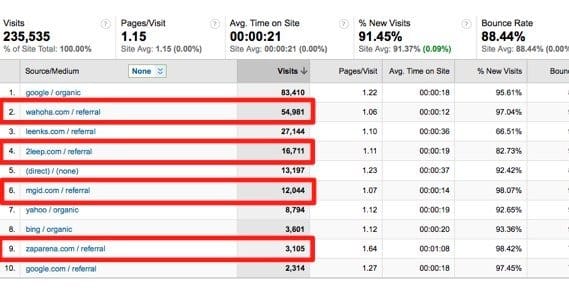
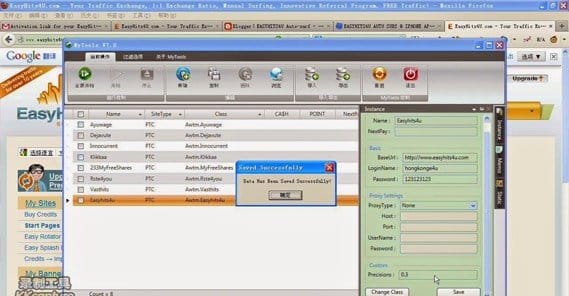
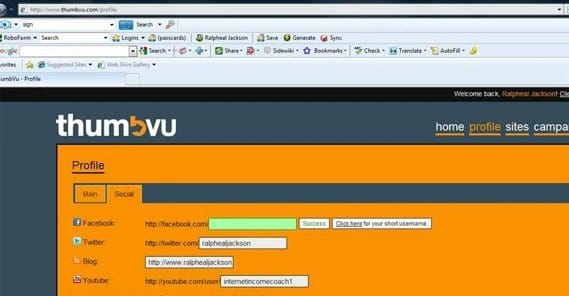
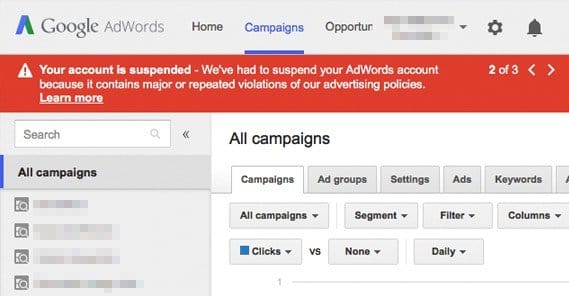


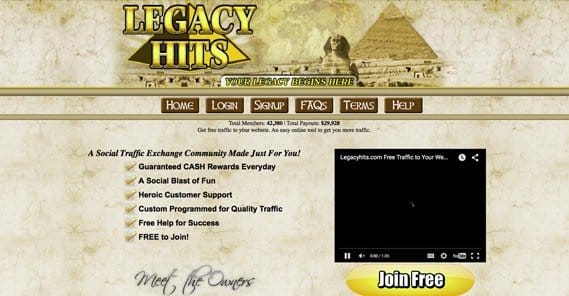
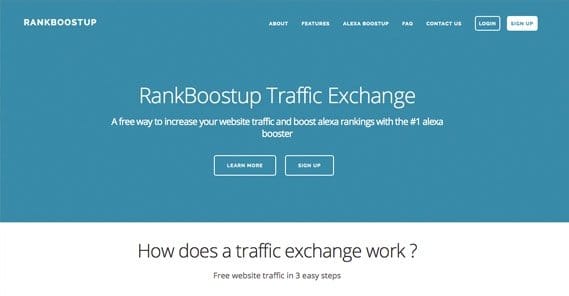





Andre Kish
says:Hiya, Kenny – thanks for this info. I’ve just started using TE sites over last 2 months and this article has helped clarify a few points, so thanks again. Do you know if TE sites like EasyHits4U can help improve SEO rankings or are they a problem to Google rankings because of where they come from? (E.G. does 1000 hits to a blog via a TE site help or hinder?) Thanks again – have bookmarked your blog as I think you’ve got some very helpful info here. All the best – Andre Kish
That’s a huge service to new comers. Don’t put anything close to a TE that has AdSense running. You’ll have your account disabled the next day. I have tried my best to get that across being that I am a fan of EH4U. I use it only for promoting a squeeze page for list marketing reasons. Great tips and advice here for folks.
luxman77
says:How about swaffic.com ? No surfing, just send hits to them and you get decent traffic back. I’m realy happy with their service.
Maria Kerridge
says:A very nice post Kenny! I make my money from everything but traffic exchanges. But, I wouldn’t make the money without them. It is great to see someone offer nicely presented clear information for those who love and have the time to surf for longer periods of time than I do right now. I lost my enthusiasm when TE owners just shut up shop never paying up and the explosion of new sites came along dragging surfers away to their 5 unique surfer a week sites. It is sites like this that are needed so that surfers can find the performing traffic exchanges and avoid the non performing. I was using the traffic delivery report so that I could plan my surfing week but many of these sites do not accept gambling sites and that has been a big pain. Sites that do accept gambling sites do not offer PayPal. I am from the UK and find that when I try to use Payza for buying traffic it rejects the payment saying I am not allowed to buy from that Country. It would be awesome if you would publish a list of great traffic spots and list their payment methods. I am now going to check out your add for cheap targeted traffic lol! Keep up the awesome work!
Gina Reedy
says:Thanks a lot
Danix Marie
says:this is too useful for me! thanks <3